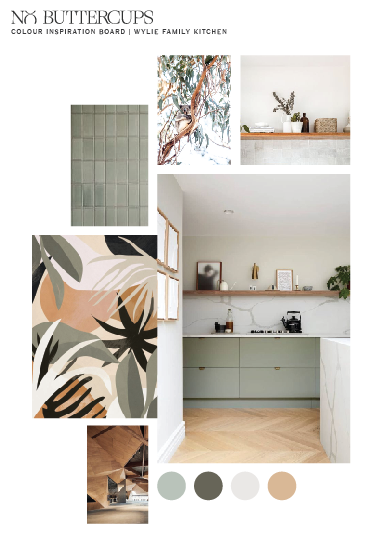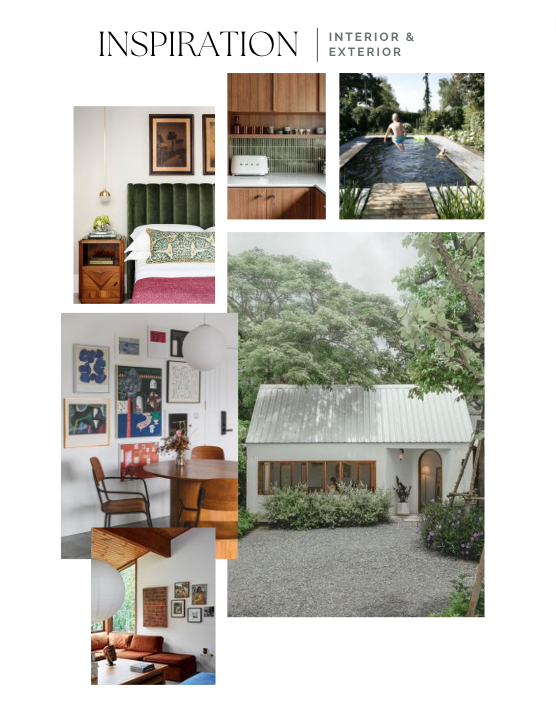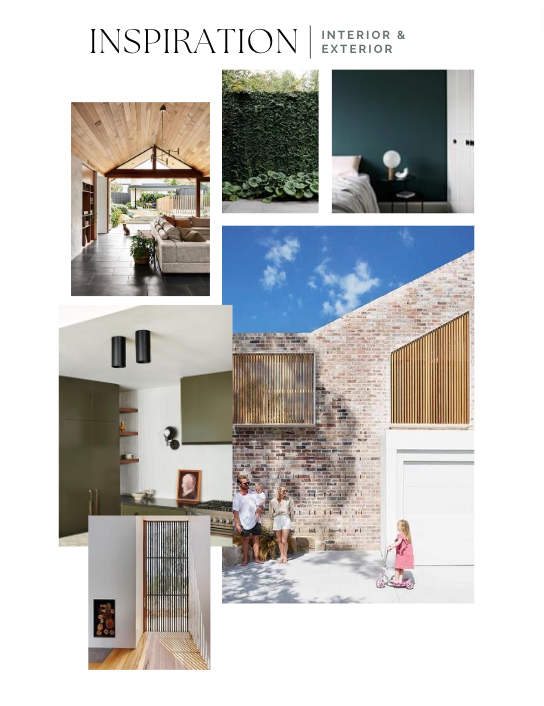Unlocking the Power of Mood Boards
A GUIDE TO CREATING YOUR INTERIOR DESIGN DREAMS
When it comes to design, mood boards are one of the most important starting steps when developing the look and feel of your project. They are crucial in defining the purpose behind your project, and enable you to move forward with clear vision and confidence to create a space that you are proud of. Mood boards are THE secret sauce for a design project, allowing you to articulate your ideas, experiment with colours and textures, and create a blueprint for you to follow. Mood boards are a designer's best friend, and you know you have hit the nail on the head, when the final mood board reflects the essence of the space you want to create.
WHY MOOD BOARDS MATTER:
Mood boards serve as a bridge between your imagination and the physical manifestation of your design dreams. They enable you to:
Clarify Your Vision: By compiling images, colours, and textures that resonate with your design concept, mood boards help you define and refine your vision.
Communicate Your Ideas: Mood boards serve as a powerful communication tool, allowing you to clearly convey your design intent and direction.
Experiment and Explore: With mood boards, you can test different combinations, experiment with colour and textures, and explore various design directions without committing to a final outcome.
Before diving into the world of mood board creation, it's crucial to define the purpose behind your project. Are you aiming to create a cosy living room retreat or a vibrant workspace? If you are looking at your whole house, what design style resonates with you?. Clarifying your design objective and vision will guide your choices and ensure a cohesive end result.
ESSENTIAL ELEMENTS OF A MOOD BOARD:
To create a stunning and effective mood board, include the following elements:
Images: Curate a collection of images that evoke the mood and atmosphere you desire for your design. Look for inspiration in magazines, online platforms such as Pinterest, Artwork by your favourite artist, or even your own photos. Look for images that resonate with your vision. If you don’t have a clear vision, then simply start collecting images and a clear theme should start to emerge.
Colours: Explore different colour palettes that align with your design concept. Experiment with harmonious colour combinations or daring contrasts to create visual impact. Make sure to include some highlight colours for balance and interest.
Textures: Texture adds depth and tactile interest to your mood board. Include images of fabric, materials such as wood, metal or natural stones, or textured images to communicate the sensory experience you envision for space.
A captivating mood board should incorporate a diverse range of elements. Don't be afraid to mix materials, experiment with contrasting colours, and blend different design styles. Embracing variety will add depth and intrigue to your mood board, just make sure everything complements each other so its not topsy turvy. Creating a sucessful mood board is an iterative process. Step back, review, and edit. Remove elements that don't contribute to the overall vision and fine-tune until it feels just right.
CREATING YOUR MOOD BOARD:
Now that you understand the essential elements, let's walk through the process of crafting your own interior mood board:
Define Your Purpose: Clarify the goal and objective of your mood board. Is it to inspire a specific design project, showcase a particular style, or communicate a mood or theme?
Keep it Cohesive: Ensure that all the elements on your mood board align with the overall theme and concept.
Choose a Focal Point: Select a central image or element that captures the essence of your design concept. This will serve as the anchor and focal point of your mood board. This could be a beautiful work of art, or an object such as a show-stopping fireplace. This focal point will feed the look and feel of the rest of your design.
Tell a Story: Let your mood board tell a story. If your mood board doesn’t evoke the desired emotions and atmosphere that you want to convey, then take a step back and consider what is missing. You may need to go back to the drawing board and find more images to really hit the nail on the head.
To spark your imagination, here are a few mood board themes that you could explore:
Coastal Retreat: Combine images of serene beaches, soft neutral colours, natural textures, and nautical accents to create a mood board that captures the tranquility of coastal living.
Bohemian Chic: Bring together vibrant patterns, eclectic furniture, lush greenery, and earthy textures to convey the free-spirited and laid-back vibe of bohemian chic.
Modern Minimalism: Embrace clean lines, monochromatic colour schemes, sleek surfaces, and minimalist design elements to create a mood board that exudes contemporary elegance.
By keeping in mind the above tips you’ll be able to craft your own stunning mood boards. Remember, mood boards are more than just visual collages; they are powerful tools that bridge the gap between imagination and realisation. They are your creative playground, where you can experiment, explore, and bring ideas to life. Embrace the elements, tell compelling stories, and watch as your designs take shape. So, grab your favourite design magazines, fire up your Pinterest boards, and let your imagination run wild. Unleash the power of mood boards and set your design journey on an inspiring and captivating path!
P.S. If you're looking for more design inspiration and stunning mood board examples, don't forget to follow us on Pinterest. Our curated boards are a treasure trove of creativity, waiting to inspire your next design adventure.
P.S.S: Have you grabbed a free copy of my mood board guide and template yet? If not, make sure to get your copy here




